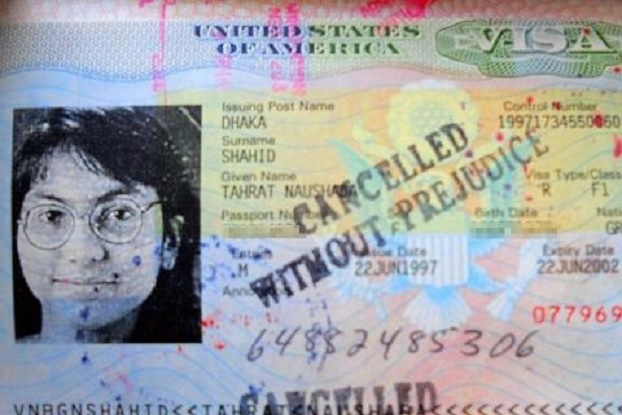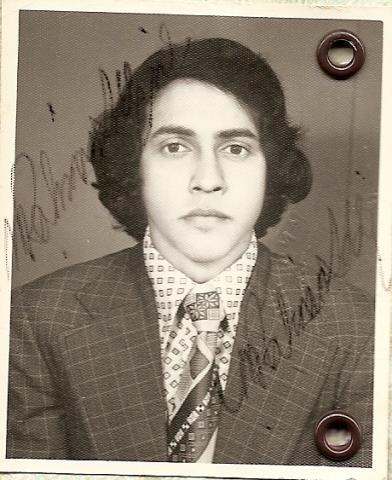The following piece is part of The Aerogram’s collaboration with the South Asian American Digital Archive, which documents and shares the history of South Asian Americans.
* * *
Immigrating to a new country can be filled with all sorts of culture shock and eye-opening experiences. The First Days Project, presented by the South Asian American Digital Archive (SAADA), collects and documents immigrants’ memories of their first days in America. For this month’s piece in collaboration with SAADA, The Aerogram focuses on the First Days stories of Bangladeshi immigrants to America.
One theme that stands out is how quiet and empty the United States can feel compared with crowded, bustling Bangladesh, which is one of the world’s most densely populated countries and is about the size of Iowa but with a population (around 160 million) greater than Russia’s.

In 1997, at age 17, Tahrat Naushaba Shahid arrived in South Hadley, Massachusetts, from Dhaka in order to attend Mount Holyoke College. She said in her First Days interview that her first night taught her the meaning of “thundering silence”:
My first night, once I … got out my bedsheets and I was settled in, it was pitch-dark outside the window and completely quiet. I kind of understood the term “thundering silence” for the first time. ’Cause where I grew up, I used to hear rickshaws ting-tinging outside and prostitutes fighting and things, you know? And now, nothing. Just quiet! … So, that was the first culture shock moment.
Similarly, Suman Poddar, who arrived in Queens, New York, from Dhaka in 1993 at age 31 to get an MBA said, “The first thing noticed — lot less people.” He said traffic and the way people drove was so “disciplined.”
Then there’s the climate. In general, of course, the United States is colder than Bangladesh, but America does have its hot spots. Maisa Syeda said she was eagerly expecting snow when she arrived in 2004. But the 10-year-old showed up in Dallas, Texas — in August. Needless to say, the Lone Star State was not exactly dusted with the powdery white stuff. “I was actually disappointed there wasn’t any snow on the ground. That was what I was looking forward to, the snow,” Syeda said in her First Days interview.
Sujit Datta, on the other hand, did encounter snow when he arrived from Chittagong in 1978 at age 21. He had to take a flight from New York City to St. Louis while on his journey to Kirksville, Missouri, where he was planning to study to become an aeronautical engineer. Regarding the view during the flight, he said, “When I was flying from New York to Missouri it was wintertime. I saw thousands of cars in the parking lot all covered by snow. I thought, ‘Wow, all the cars must be dead by now.’”

Differing bathroom customs can also cause humorous culture shock. Utpal Dutta, who arrived in Detroit in 1981 at age 25 to pursue his education, shared the following anecdote (the transcript of which has been lightly edited for length and clarity):
I came here for higher studies, and the next day I went to the department and met my advisor. At that time, he had his own bathroom. When I got there, he poured himself a cup of coffee and picked up the Detroit news and asked me to wait. And remember, I am from Bangladesh and couldn’t believe that he was going to the bathroom with both of those things. Nowadays, I also take newspapers into the bathroom. This was the strangest thing that happened to me once I got here.
Read and listen to more First Days stories from around the world on the First Days Project’s website. Learn more about the project by listening to this recent interview with SAADA’s Samip Mallick, who runs the project.
And in light of recent concerns and debates over refugees and asylum, here are a few First Days stories from people who came to America to escape violent conflicts and oppressive governments:
• Ahmad Ali, who fled Syria’s war and arrived in 2011 at age 16
• Ta Kwe Say, who fled the military government of Myanmar (Burma) and arrived in 2007 at age 15
• Noor Adan, who left the violence in Somalia and arrived in 2003 at age 18
• Mariana Trotta, who arrived from Venezuela in 2000 at age 6, went back as a teenager when her family was denied political asylum, and returned recently on a student visa
• Pedram Salamati, who left Iran for political reasons and arrived in 2014 at age 21
• Daniel Machar, who was formerly a child soldier in present-day South Sudan and arrived in 2006 at age 20
• Anonymous, who fled Bosnia’s war and arrived in 1998 at age 28
* * *
Preeti Aroon (@pjaroonfp) is a Washington, D.C.–based copy editor at National Geographic and was formerly copy chief at Foreign Policy.












